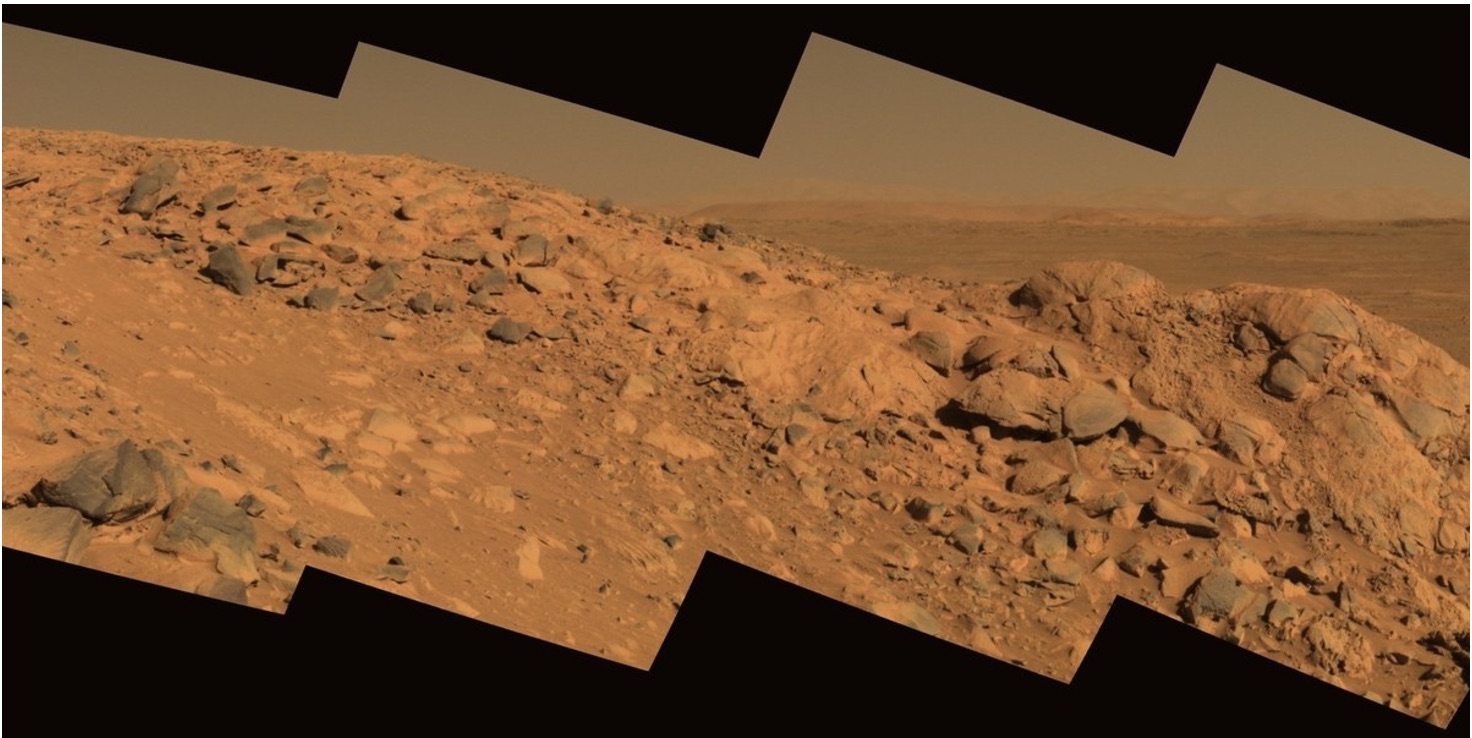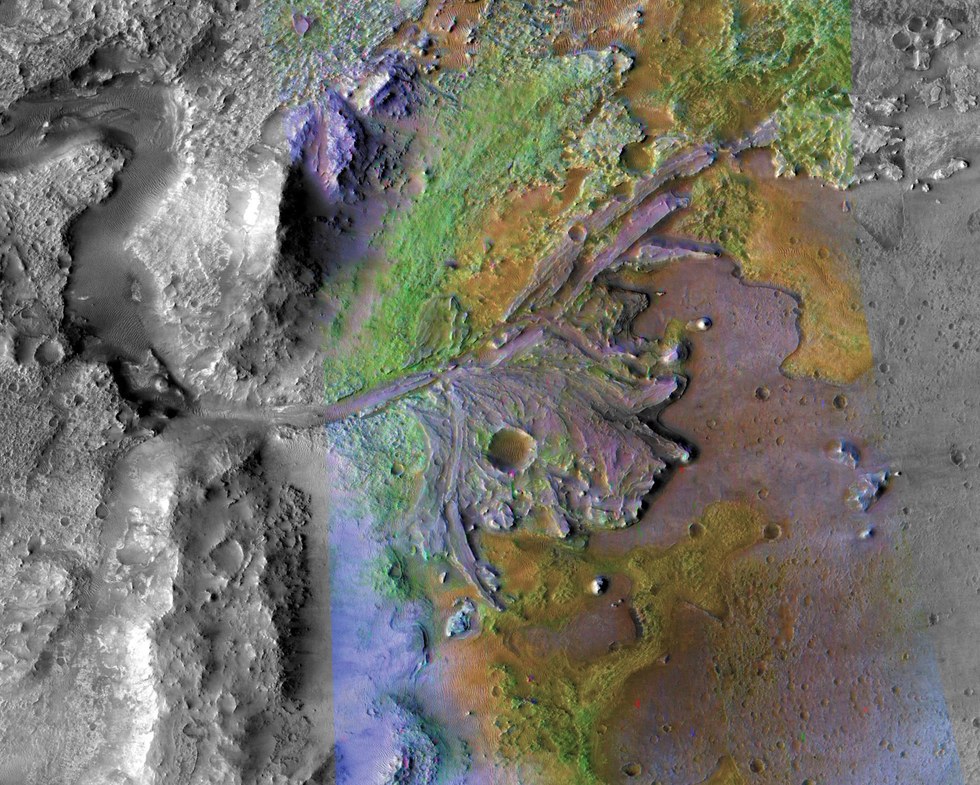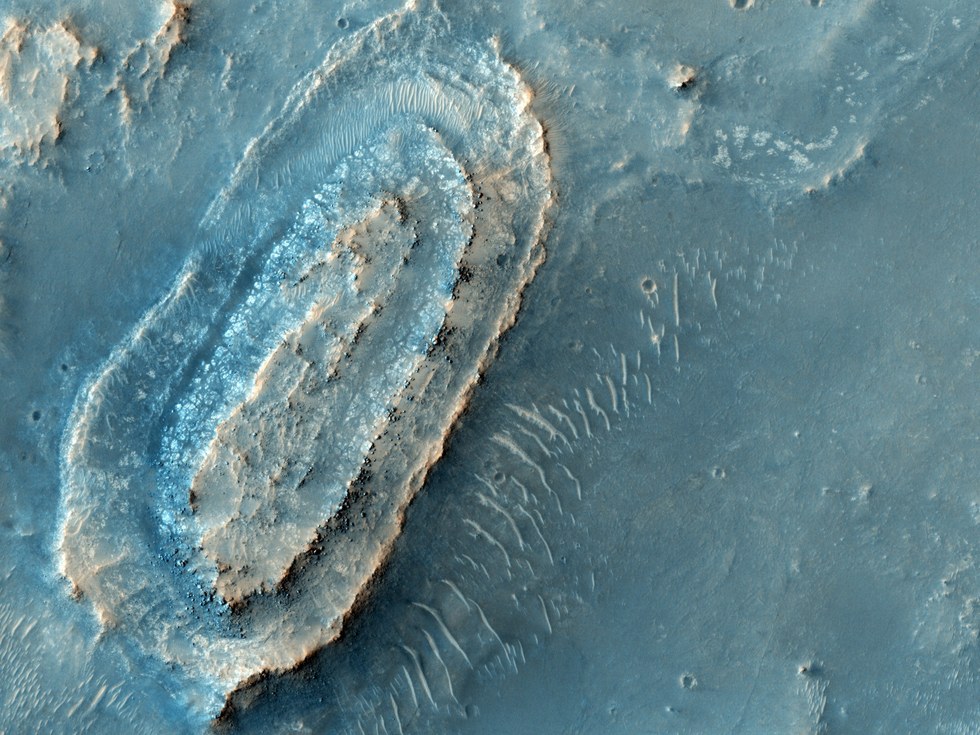Mars 2020 Could Return to Where NASA's Spirit Rover Roamed

NASA's next Mars rover could revisit a spot already explored by the now-dead Spirit rover a decade ago. One of the landing sites selected by scientists in a meeting late last week is the Columbia Hills region, which Mars Exploration Rover Spirit explored from 2004 to 2010.
In a landing workshop held Feb. 8 to 10 in Monrovia, Calif., a committee of scientists narrowed down their picks from eight choices to three. The selectees are Columbia Hills, Jezero Crater and NE Syrtis, all chosen because there is a high probability that water existed there in the ancient past. Since the main mission of the Mars 2020 rover is to seek evidence of ancient habitable environments and life, these sites were chosen to increase the odds of the rover reaching success.
Subject to NASA's approval, these sites will undergo more detailed reconnaissance in the coming months from NASA's Mars Reconnaissance Orbiter and other assets at Mars. The sites will then be narrowed down to a single candidate after further discussion.
"To go back to Columbia Hills — I think it's a great site," said Jim Rice, who was on the team advocating for Spirit's research site, who spoke with Seeker before the meeting took place. He is co-investigator and geology team leader on the Mars Exploration Rover project, which included Spirit and its twin, the still-active Opportunity.
"In that location, there are hot springs or geysers going off there in the past," he added. "We know enough about ancient environments to know that is a great place to look for ancient organisms."
RELATED: Mars 2020 Rover's Landing Site Will Undergo Hot Debate This Week
The scientists who attended the workshop were urged to consider future generations when making their selections, because Mars 2020 will be tasked with leaving "caches" behind if it finds anything particularly interesting. These caches could be picked up by another sample-return mission in future decades. If this were to happen, the samples would be brought back to Earth, where it's easier to analyze the information in laboratories. The Mars 2020 rover is tasked to only do limited analysis on the road.
Get the Space.com Newsletter
Breaking space news, the latest updates on rocket launches, skywatching events and more!

In a statement, NASA wrote that both Jezero Crater and NE Syrtis also have strong evidence of ancient water. At Jezero, the agency wrote: "River channels spilled over the crater wall and created a lake. Scientists see evidence that water carried clay minerals from the surrounding area into the crater after the lake dried up. Conceivably, microbial life could have lived in Jezero during one or more of these wet times. If so, signs of their remains might be found in lakebed sediments."
At NE Syrtis, volcanic activity and underground heat sources created hot springs and caused surface ice to melt, NASA added. "Microbes could have flourished here in liquid water that was in contact with minerals. The layered terrain of NE Syrtis holds a rich record of the interactions that occurred between water and minerals over successive periods of early Mars history."
Rice acknowledged that "Mars is a big planet" and for that reason, Mars 2020 could be tasked to go to a spot that was never explored on the ground before. (Information about Jezero and NE Syrtis comes from observations from orbital spacecraft, such as NASA's long-standing Mars Reconnaissance Orbiter.) That said, the advantage of Columbia is that Spirit was there before and has already mapped out some of the spots that had water. This would save Mars 2020 time in investigating possible habitable locations, he said, and would also mirror how geologists generally do their work.
Usually an investigation of a geologic site on Earth includes an initial reconnaissance where geologists determine where to go back later on, to do more detailed work, he said. "Field geologists return to the same site over and over again; they don't just go there once and you're done," Rice added.
RELATED: NASA Watchdog Warns Mars 2020 Rover Could Miss Its Launch Date
Mars 2020 is closely based on the design of the successful Curiosity rover, which has been seeking habitable environments on Mars since landing at Gale Crater in August 2012. The Mars 2020 instrument package is slightly different, however. Besides including more advanced cameras and spectrometers than its predecessor, some of Mars 2020's other instruments include a Mars oxygen in-situ resource experiment to try to produce oxygen from the carbon dioxide atmosphere, a radar imager to probe beneath the surface, and a Mars Environmental Dynamics Analyzer (MEDA) to provide measurements of temperature, wind speed, dust size and other parameters.

In general, signs of a habitable environment on Mars include evidence of liquid water. Geologists look for what are called "hydrous minerals," which are minerals that have water or some component of water built into their crystal structure. Examples are clays and sulfates. Additionally, geologists search for minerals that don't have water in their crystal structure, but form in the presence of liquid water, such as hematite.
Occasionally, aspects such as rock grain sizes can also give away the presence of water in the ancient past, such as when Curiosity found conglomerates — sedimentary rocks composed of various sizes of gravel-sized rock fragments — shortly after its landing.
"We are looking for interesting shapes and chemistries that are correlated as possible signs of life," Ken Williford, deputy project scientist of the Mars 2020 rover, told Seeker. "That's what will guide us as we choose our locations to sample."
RELATED: Here's What NASA's Next Generation Mars Rover Will Do
Williford added that Mars 2020 is not tasked to look for current life. NASA and other agencies have identified "special regions" on Mars where briny water likely flows on its surface, such as recurring slope lineae in craters. That said, it's tough to sterilize a spacecraft perfectly, so officials don't want to accidentally introduce Earth microbes in these environments. Also, as one of Mars 2020's goals is to collect the caches for a future sample-return mission, another concern is reducing the chance of bringing Mars microbes back to Earth.
Mars 2020 will have its project critical design review late this month, where traditionally engineers work from detailed drawings to see if there are any significant issues in the design. Given that Mars 2020 is closely based on Curiosity, however, Williford said that he expects the review will also include a discussion on how spare hardware can be best integrated into the design, and what final testing would be needed to prove that hardware still has the capabilities needed for the mission.
Originally published on Seeker.
Join our Space Forums to keep talking space on the latest missions, night sky and more! And if you have a news tip, correction or comment, let us know at: community@space.com.

Elizabeth Howell (she/her), Ph.D., was a staff writer in the spaceflight channel between 2022 and 2024 specializing in Canadian space news. She was contributing writer for Space.com for 10 years from 2012 to 2024. Elizabeth's reporting includes multiple exclusives with the White House, leading world coverage about a lost-and-found space tomato on the International Space Station, witnessing five human spaceflight launches on two continents, flying parabolic, working inside a spacesuit, and participating in a simulated Mars mission. Her latest book, "Why Am I Taller?" (ECW Press, 2022) is co-written with astronaut Dave Williams.









